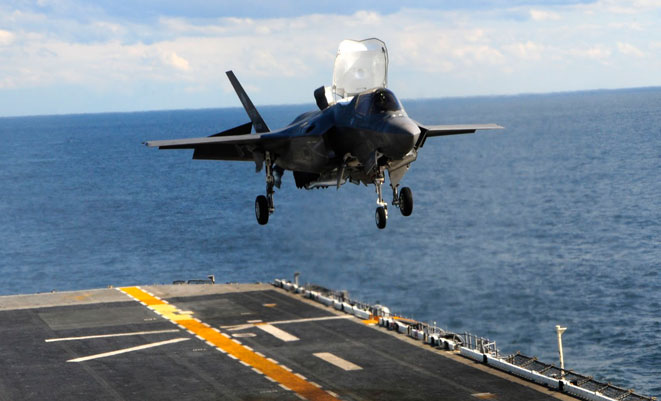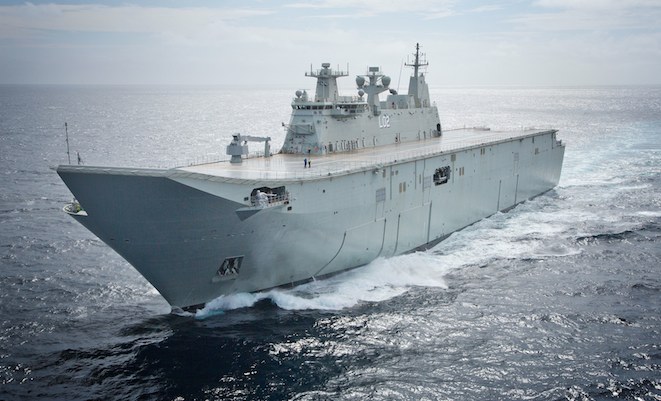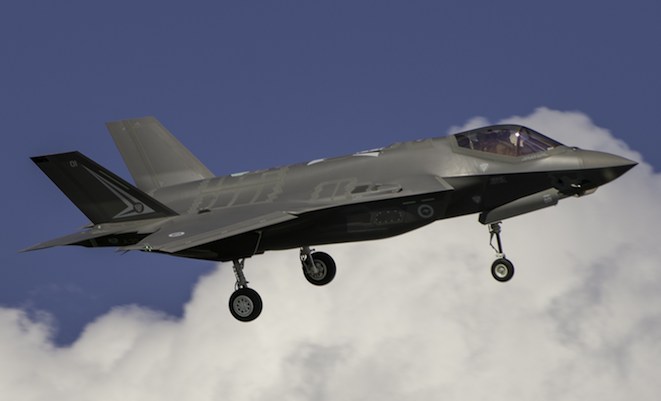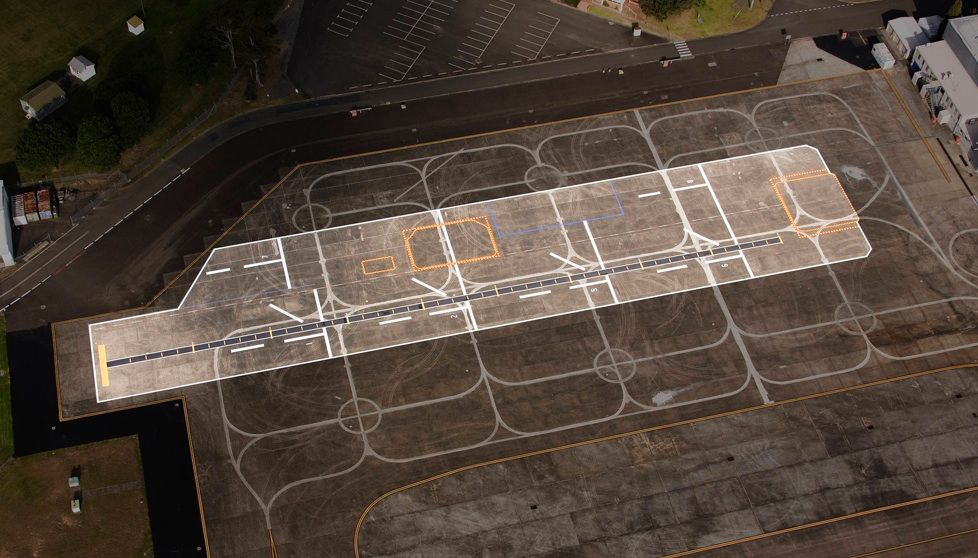Some more GREAT Material from the above magazine. I have not read about the two setting STO throttle before - find it in all the woids below....
Jumping Jack Flash July 2014 unknown author AIR International F-35 Special Edition
| QUOTE | “...The DT I test plan was released as a 150-page document, one of the most complex ever written for any aircraft and requiring countless meetings over an 18-month period to finalise. Maj Rusnok said: “That’s a real tribute to the folks with the knowledge base and the wherewithal to write that kind of stuff.”
Pilots, Training and Embarkation Four pilots were selected for DT I: Peter Wilson of BAE Systems and three US Marine Corps test pilots, LtCol Schenk, LtCol Matthew Kelly and Maj Richard Rusnok. Each required ten vertical landings in their pocket as a test plan prerequisite prior to starting workups for the ship. Peter Wilson, the STOVL-lead pilot with the F-35 ITF at Pax, the test conductors and test directors played a pivotal role in the training to get the pilots ready to go. The process involved each pilot undertaking multiple simulator events to mirror the daily morning and afternoon flight periods available on the ship – which lasted for up to five hours and took place between May and October.
Naval Air Systems Command (NAVAIR) simulators at Pax were developed for the test mission and can be linked to the test control rooms on the base. Landing Signal Officers (LSOs) and carrier suitability engineers took part in the simulator training and provided the calls usually made by controllers in the bridge of the ship, primary flight control and the tower. “We started with just the basic mechanics and worked our way into specific test points, emergency procedures and eventually to periods involving every conceivable type of test. You name it, we basically simulated it,” said Maj Rusnok. The next training requirement was Field Carrier Landing Practice (FCLP) at Pax for which a deck painted to look like a ship with instrumentation was set up in the middle of the airfield and equipped with a landing aid used on LHDs.
FCLPs were flown with the support of sailors assigned to Pax with prior LHD experience. Two weeks before embarkation, the entire Wasp flightdeck crew came to Pax for academic training. “We had the fire fighters learning how to rescue a pilot out of an F-35 – because there are so many unique aspects about the jet – and the full deck crew with the air boss and the mini boss running our flight period on the airfield,” said Rusnok.
On the afternoon of October 3, lead government STOVL pilot LtCol Schenk took off from Pax River in BF-02, flew the short distance to the USS Wasp under way off the coast of Wallops Island, Virginia, flew a couple of passes alongside the ship and then executed a vertical landing – the first aboard an LHD-class ship – to ‘spot seven’.
He also made the first launch the next morning, and completed a further three take-offs and landings in the first flight period. Maj Rusnok flew in the second period. Each pilot completed a nominal CQ qualification period inside the envelope before venturing into more interesting pieces of the envelope.
“We didn’t learn anything too crazy. We were pleasantly surprised at what we saw – there was no smoking gun, we didn’t have any near misses and the deck crew was happy with what they were doing,” said Rusnok.
Spray Coming onto the Ship
All of the initial missions flown from the Wasp during DT I were in the daytime and involved the jets recovering to the ship to a ‘case one’ pattern: coming into the break over the top of the ship, turning downwind, and then approaching the ship from approximately one mile aft of the stern.
“We generally come out of a final approach turn somewhere between 375 and 400 feet above the water for a three-degree glide slope to decelerate abeam the ship, usually about a wingspan’s worth off the ship,” said Rusnok. “As we get down and ready to cross the deck we do so at 90 or 45-degrees depending on how our closure is on our control and what the LSO is clearing us to do. He’s really running the pattern.
“At that point we’re somewhere in the vicinity of 110 to 120 feet above the water, and that’s when you start to see some of the wash coming up – but from the pilot’s perspective you don’t even know it’s there. The only time we [the pilots] saw any spray was during tailwind test points, at the edges of envelope. There were no adverse handling characteristics caused by the spray; you just see it because it’s getting blown back towards you as expected.
“There was concern that spray was a potentially big issue. Because we have our closure under control we can keep the aeroplane moving right across the deck, that’s really no issue, but if time is spent dwelling at that position there’s time for a mini tornado to develop – and we see that ashore with dust as well. At sea, generally we didn’t even know it was there and it wasn’t affecting the guys on the flight deck or the tower, so it was a non-event in that respect.” The test events were undertaken methodically, and not at war ops high tempo, to ensure procedures were conducted correctly and that nothing broke.
Aircraft Handling Around the Ship
Maj Rusnok described flying the F-35B around the ship: “The aeroplane in all its basic flying qualities, especially in STOVL mode, is kind of magical, it really is. You sit at 150 feet in a hover and it’s like sitting in this chair except that you’re elevated. The aeroplane is incredibly stable. Hypothetically, you could put a drink on the dashboard and it’s not going to spill.
“If you watch it from the outside, you’ll see the control effectors actually moving very rapidly and making all kinds of corrections – I’m not. They’re not making big swings, but making minute movements, keeping the aeroplane in the rock-steady hover that we experience in flight; and we saw that at sea in just the same way albeit with some forward speed to continue to fly formation with the ship as it moves through the water.”
Taking an aircraft to the ship presents concerns: the salt environment, the potential for disruptive interaction between the ship and the aircraft caused by the burble (the unusual air flow around the ship), the compatibility of the avionics with the ship, and the basic vehicle interface and displays – are there unknowns that have not been thought about?
“We never saw any of that at sea,” said Rusnok. “Was everything perfect? Absolutely not, that’s why we do developmental testing. But do I feel comfortable with a properly trained F-35 pilot, who’s not a test pilot, taking an aeroplane out to sea to do basic daylight landings? Absolutely, based on what we saw, especially in the nominal envelope they’ll provide the fleet with for initial operation.”....
...STO-ing...
...Maj Rusnok noted: “We weren’t only stepping through flying with varying crosswinds but also various centre of gravity load-outs for the aircraft, done with fuel. To achieve the very specific weight bands on the aircraft required to match the model, sometimes we had to refuel on the deck or wait to burn down fuel to meet the requirement of the specific test band. So not very fast launches, but very controlled. We’d take off and burn the fuel down to a specific landing weight to maintain divert options ashore and stay in the weight band.”
There are three ways to conduct a short take off (STO) in the F-35B: stick STO, button STO – and auto STO. “That’s a completely automated way to STO the aircraft off the flight deck. You punch in a distance and the aircraft will auto rotate to its optimal fly-out condition. It’s all based on distance: we know where the aircraft is spotted [before it starts its take-off run] and where it should start its actual rotation,” explained Rusnok. “Unlike a Harrier, which launches off the end of the ship flat, the F-35 rotates at about 225 feet from the bow, sits on two wheels until it gets to the end of the ship and actually takes off, a much different process to a Harrier. From a pilot perspective, you lose some sight of the front of the ship; in a Harrier you can see all the deck. But that’s all part of optimising a 35,000lb aeroplane to get off the ship compared to the Harrier, which is only 16,000 to 25,000lb.”
With stick STO the pilot controls the take-off by pulling back on the stick, holding it there and then rotating to the optimal pitch angle to fly off. In button STO, the pilot uses a trim switch which rotates the aircraft when pushed in, activating it when the aircraft passes the yellow STO rotation line positioned 225 feet from the bow of the ship.
“That was a temporary marking applied on the flight deck for this trial and is now being permanently installed on the ship with lighting,” explained Rusnok. “It’s based on optimising the performance of the aircraft and its flying qualities, so we can get the aeroplane off with the maximum amount of nozzle clearance and performance. The STO line is our visual cue to either pull the stick aft or hit the button; or if you’re on automated STO you should start seeing the aeroplane’s flight controls moving by the line, otherwise the pilot can intervene and pull back on the stick. We’ve never had to intervene.” [joker]
The pilot also has command of the throttle. Two power setting options are available for take-off: Mil STO and Max STO [have not read about this before], as Maj Rusnok explained: “When you taxi to the tram line you stay in mode one, the conventional flight mode. You convert the aircraft into mode four, the STOVL flight mode, and it takes about 15 seconds or so for the doors to open up and the lift fan to engage.
“Then you push the throttle about halfway up the throttle slide into a detent position at about 34% engine thrust request. It sits there and you check the engine gauges: if the readings are okay you slam the throttle to either Mil or Max position and then release the brakes simultaneously. Pushing through to max is like an afterburner detent. But it’s not an afterburner – you can’t go to afterburner in mode four.
“It’s a very fast acceleration. The closest we would spot from the bow is 400 feet, so about 175 feet before we would actually start rotating the aeroplane [at the STO rotation line]; so very, very quick.”
One of the big test points for DT I was to ensure adequate nozzle clearance in all the different test conditions. The engine nozzle swings down and back up during the take-off in accordance with inputs from the aircraft control laws.
“It’s all automated,” said Rusnok. “The pilot is not in the loop whatsoever – either they’re pushing the button and letting the aeroplane do its own thing or pulling back on the stick to help it. Monitoring systems cue when something is wrong, so you have to rely on them to keep you safe because the flight controls are being moved unbelievably quickly.”
Maj Rusnok said the take-off was very much like that ashore, with very little sink off the end of the deck. “The aeroplane is ridiculously powerful in STOVL mode. Just raw, unadulterated power.”
Recovery to the Deck
Generally, each time an aircraft took off it would burn down its fuel load by flying around the ship and making approaches until the appropriate landing weight was reached for the test points required. Landing spots seven and nine were used: seven is the primary location for STOVL jets on LHD ships, while nine is further aft on the tram line. The landing spot selected for each flight was mainly driven by NAVSEA’s environmental engineers who specified a certain number of landings on each one to determine their flow characteristics – and how that affected minimum time between landings – ultimately working up to demonstrate two-ship F-35B operations.
Both spots were instrumented to measure different parameters: seven for deck deflection and nine to measure heat on an experimental non-skid deck surface called Thermion. According to NAVSEA this new coating – a bond of ceramic and aluminium designed to be more resistant to extreme heat, and wear and tear, from flight operations – showed no signs of heat stress during DT I.
“Sometimes BF-04, the mission systems aircraft, would fly instrument approaches to come alongside the ship and side step over to the flight deck . But we were primarily testing compatibility of TACAN and carrier-controlled approaches, not the full transition from an instrument approach across the stern to a landing,” said Maj Rusnok....
...Feedback from DT I
Over the course of the 19-day DT I test period the two jets logged 28 hours’ flight time and completed 72 short take-offs and 72 vertical landings in conditions of up to 33 knots of wind-over-deck and 10 knots of starboard crosswind....
...The Director, Operational Test & Evaluation’s Fiscal Year 2011 Annual Report (DOT&E FY2011 AR) said: “As expected, high starboard crosswinds produced the most challenging environment. One approach to hover prior to a vertical landing was waved off by the pilot due to turbulence in the ship’s air wake.
“A minimal nozzle clearance of two inches was observed at rotation during a short take-off with high starboard crosswinds when the pilot made an aggressive correction to maintain centreline....
...The good story was the tyres. We thought they were going to be eaten up by the non-skid because that’s a pretty rough surface out there. We only changed two.” He was enthusiastic about the aircraft’s performance during DT I: “We’ve proved the F-35B is compatible with LHD ships and we’ll eventually prove that with the UK’s CVF-class ships too. We didn’t hurt anybody, we didn’t break anything and the aeroplane performed outstandingly in terms of flying qualities and maintenance.”
Development Test Phase Two
On August 10, some 21 months after the conclusion of DT I, USS Wasp hosted the follow-on F-35B sea trials – known as Developmental Test Phase Two, or DT II.
Just like DT I, VX-23 deployed four pilots, two jets and a 200-strong team for an 18-day test period. Pilots selected for DT II were LtCol Jimi Clift and Maj Mike Kingen of the US Marine Corps, Squadron Leader Jim Schofield from the Royal Air Force and BAE Systems’ Peter Wilson, the only pilot to fly in both sea trials.
DT II was undertaken to expand the F-35B’s allowable wind envelope for launch and recovery, conduct the first-ever night operations and initial mission systems evaluations at sea, evaluate the dynamics associated with aircraft operations on a moving flight deck and further test shipboard sustainment of the F-35.
“We tried as best we could to keep all the flying fleet-relevant, as opposed to DT I where there were a lot more tests to maintain configuration for longer periods of time,” said Maj Mike Kingen.
Test Events
VX-23 devoted considerable time in 2013 to clearing the envelope to be used onboard the USS Wasp and vigorously testing the In-Service Release (ISR) of the propulsion system. There are two standards of the propulsion system: First Flight Release (FFR) and ISR, each distinctly different in terms of software and hardware. The two aircraft used for DT II incorporated the different standards – BF-01 is an FFR, and BF-05 is an ISR, the only such aeroplane in the SDD fleet.
“That gave us a unique opportunity to take the ISR propulsion system to the boat and compare it back-to-back with the capabilities of the FFR system: we only found very minor differences,” said Peter Wilson, STOVL-lead pilot for the F-35. An ISR propulsion system has more capability than an FFR and is able to cope with wider variations in aircraft centre of gravity (CG), a key factor when bringing weapons back to the boat. With forward CG, such as when weapons are carried internally, the lift fan must produce more thrust than the three-bearing swivel module (3BSM) in order to balance the aircraft at a steady hover attitude. “You have more capability to handle off-nominal CGs but that doesn’t necessarily mean you always have more performance because of knock-on effects. If for example a gust pushes the nose up, the control system has to vary the balance of forces between the lift fan and the 3BSM to bring it down again. All this happens automatically in very quick time such that the pilot doesn’t even know it. But the adjustment process may lose the aircraft a couple of feet because maximum thrust is not always available while adjusting the attitude in the hover. This happened twice during DT II.”
As part of the test programme, VX-23 undertook crosswind and tailwind envelope expansion. This included what Peter Wilson described as “some very interesting test points” with the aircraft positioned with a tailwind – which involved tracking the centreline with various bank angles moving backwards at 25 knots or so, “really testing close to the limits of the propulsion system’s capability. So we’ve hit the corners of the envelope going backwards and sideways”.
VX-23 also conducted vertical landings with a 15-knot crosswind and with expected hot gas ingestion from the ship’s funnels. “We’ve completed extreme descent rates touching down at 12ft/sec and not exceeded the load limits of the landing gear,” said Wilson.
Crosswind testing is an interesting scenario.
There are two ways to achieve the required objective. The pilot can generate crosswind in the hover by turning 90-degrees away from a headwind to generate crosswind from the natural wind and then move sideways over the ground to achieve the required test condition. The wind can be forced to come at any angle to the aircraft. The alternate way is to test when the desired wind speed is available naturally, pedal turning the aircraft until the direction required by the test point is achieved.
“DT II was about crosswind envelope expansion; getting out to 40 knots of headwind; tailwind envelope expansion; and the internal carriage of inert weapons during take-offs and landings for the first time,” said Wilson.
Carriage of weapons in the internal bays moves the aircraft’s CG forward, which makes it behave a little differently. Testing it was a DT II goal. Wilson explained: “We also had to periodically jettison weapons to meet the necessary landing weight. DT II was the first time the F-35B had jettisoned weapons. We also wanted to fly at night, conduct landings with ship motion to increase the loads envelope, evaluate the effects of motion on the control system, and how the pilot would track the motion, and further stress the Thermion flightdeck coating.”
US Marine Corps test pilot LtCol Jimi Clift flew the first night vertical landing on August 14. VX-23 also performed regression testing of the test points that failed during DT I. Take-offs during DT I showed that the nozzle swung, in some angles, just two inches from the flight deck, requiring improvements to the flight control system. “You can’t test that scenario ashore, so we repeated some of the conditions seen during DT I to prove that the corrections made aligned with the simulation,” said Wilson.
Night Ops, HMDS, Mission Systems and Crosswinds
Maj Kingen and Squadron Leader Schofield gained their carrier qualification on the first day of DT II, after which the flight test team was ready to conduct night ops.
“I had a ridiculous grin on my face when I returned to the ready room after my first night mission. I’d never flown a night mission to a boat before feeling anything other than stressed,” said Wilson. “That’s what the Harrier was like at night. You really felt like you got away with it. You’re highly trained so you’re probably going to be fine, but you always knew not much had to go wrong and you’d be screwed. “In the F-35 the experience was so different because it holds the height for you, it looks after you and you can actually leave it alone, which is often the best thing you can do. And it holds a beautiful hover, far better than you could do manually.
“It’s really a task that requires you to just monitor the systems. Having done three vertical landings in about two hours, taking fuel, launching again and returning was a doddle by comparison to the Harrier.”
The testing sought to prove the pilot could improve the night landing task relative to the Harrier by using the naked eye and the Gen II Helmet Mounted Display. “That’s what we did supremely,” said Wilson.
He confirmed that the functionality problems of the Gen II-standard HMDS are not encountered with STOVL operations. “You see effects at sea that you don’t necessarily see ashore. For example, low sun on the horizon can bounce back off the water and potentially wash out some of the HMD symbology. It’s not fantastic, but it’s okay. The primary issue with the helmet occurs when the aeroplane starts to buffet. We don’t get much buffet in STOVL mode and it’s a comfortable ride most of the time.”
Test events were also undertaken while the jets were airborne, as Wilson explained: “We conducted mission system tests to ensure interoperability with the ship: communications, navigation, TACAN and IFF. We also flew instrument approaches in visual conditions by day and by night to simulate our ability to get back to the ship in bad weather.”
Another aspect of STOVL ops tested during DT II determined the effect of wind coming around the ship’s island. When an aircraft is in the hover, the island is on the right. If the wind comes from the right it makes its way around the island and catches the aircraft from various angles. “That makes the hot gas coming out of the ship’s stack come at you, which is bad news. Aeroplanes don’t like ingesting hot gas: it reduces performance,” said Wilson. “We had mixed results, some good, some bad. With the wind coming from ‘round the back of the island, the aeroplane starts to feel like it’s jostling around. And the effects of the hot gas coming from around the front eroded our performance margin, but not to a point we were concerned because the aircraft has the capability to withstand the effects. We opened out to 10 knots of crosswind from the right and 15 knots from the left, which is a super envelope. It was a great success.”...
...During the 18-day sea trial the two jets completed 95 take-offs and vertical landings, both forward and aft-facing, and 17 night take-offs and landings in 10 days of testing.
“It was an extremely successful at-sea period. We hashed out the envelope and we got the fleet something they’re going to be able to work with. In fact we’ve got everything except for elevated sea state,” said Maj Kingen." |
AIR International F-35 Special Edition July 2014
|
















